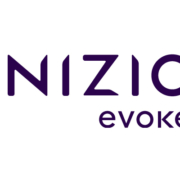The growth of patient-centricity in rare disease promotion: Establishing a new norm and better outcomes
The growth of patient-centricity in rare disease promotion: Establishing a new norm and better outcomes
By Erica Rivera
After working in rare diseases for more than a decade as an agency strategy lead, the most gratifying change I’ve seen is the growth of patient-centricity in patient and HCP promotion for rare disease brands.
Rare disease is a challenging and complicated category, with very high stakes. Small populations, large numbers of children, and a long road to diagnosis for most patients mean that the challenges and complications will always be present and always require razor-sharp precision when developing strategy and building promotional digital ecosystems.
What is changing, however, is that this exacting work is being done while brands are also looking at patient communities more closely, with the goal of meeting their full range of needs, inclusive of treatment and beyond. This is a hallmark of patient-centricity.
What are some examples of this shift to patient-centricity in rare diseases?
We see more reliance on ongoing, active social listening, both for the explicit and implied data we can gather. Social listening is critical for conversations that shed light on issues such as the barriers patients and caregivers face, perceptions and sentiments about treatment, and what kinds of patient resources are valued. But social listening is also critical for the conversations that are not being had. In fact, these “missing” conversations are often more revelatory and shed deeper insights than the explicit conversations. Uncover what is missing and we may be able to see where patients lack the control they need over their diseases and individual treatment journeys.
Another example of growing patient-centricity is when brands build experiences and provide resources that don’t require a patient or caregiver to shift the way they already live their lives. Managing a rare disease is extraordinarily time-consuming and – as we all know – nothing related to healthcare is simple. We are putting the patient first when a brand understands how people relate to digital offerings and builds to those patterns rather than developing a new, perhaps more complicated interface for the sake of novelty.
Brands want innovative offerings associated with their product, and digital platforms are inherently built for continuous improvement. But people have strong habits and set reflexes, and one of the best ways to support patients navigating the arduous process of life with a rare disease is to build to those natural habits and reflexes. The more something integrates into their daily lives, the less time and consideration it requires. The brand might forgo a flashy new piece of technology or innovation to make the overall user experience fit more seamlessly into patients’ lives. But that, in itself, is innovation.
Not all patients or families are alike, even within each unique rare disease. A deeper understanding of the patient journey illuminates not only new moments that matter or ways to segment the audience, but also new ways to build experiences that suit the journey milestone and the person experiencing it.
It’s imperative to provide branded content that suits the particular needs of each segment of an audience. That means different content for patients, caregivers and loved ones of the patient, and even more nuanced content for subsets of these patients, caregivers and loved ones. There is no one-size-fits-all content that can effectively meet the needs of all rare disease patients and the constellation of caregivers, family and friends affected by each patient’s disease.
Building experiences that support brand goals AND put the personal needs of patients front and center gets us significantly closer to positive outcomes on all fronts. Watching the trend line, I look forward to patient-centricity becoming the norm in patient and HCP promotion for rare disease brands.










